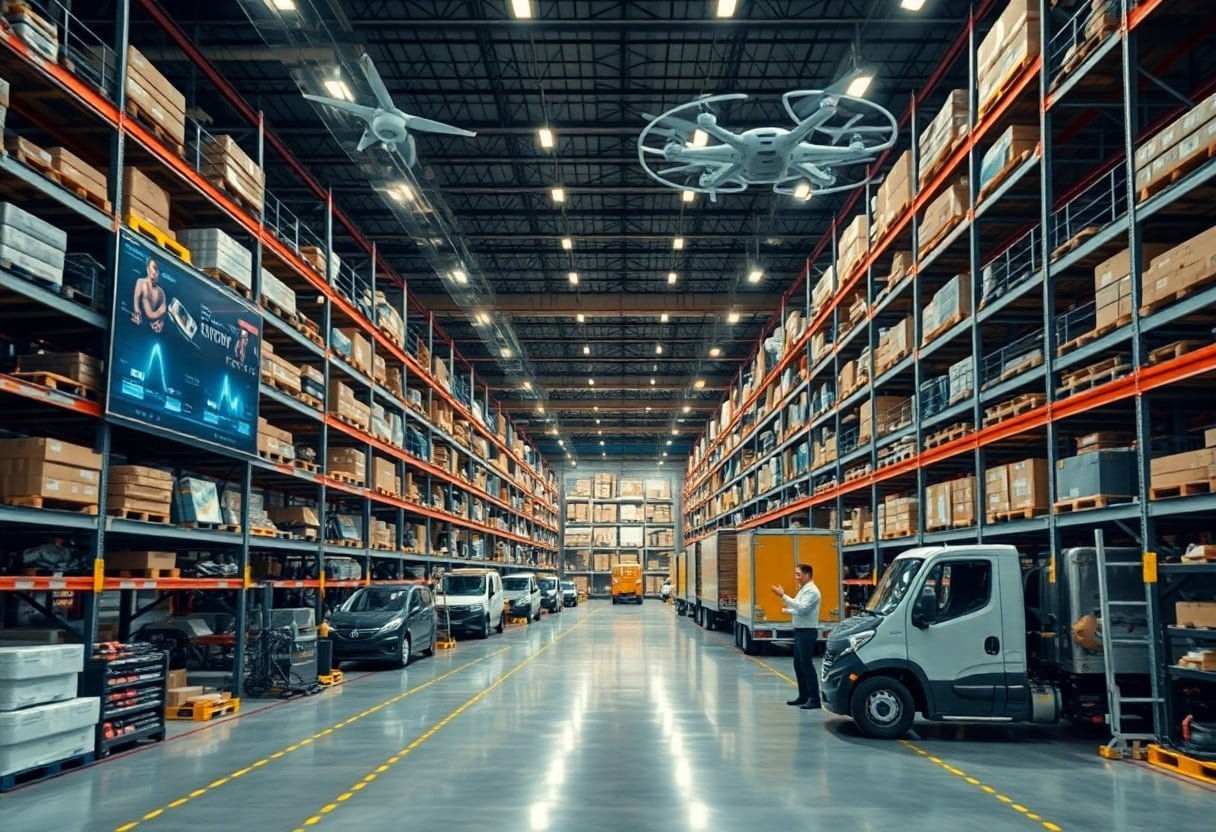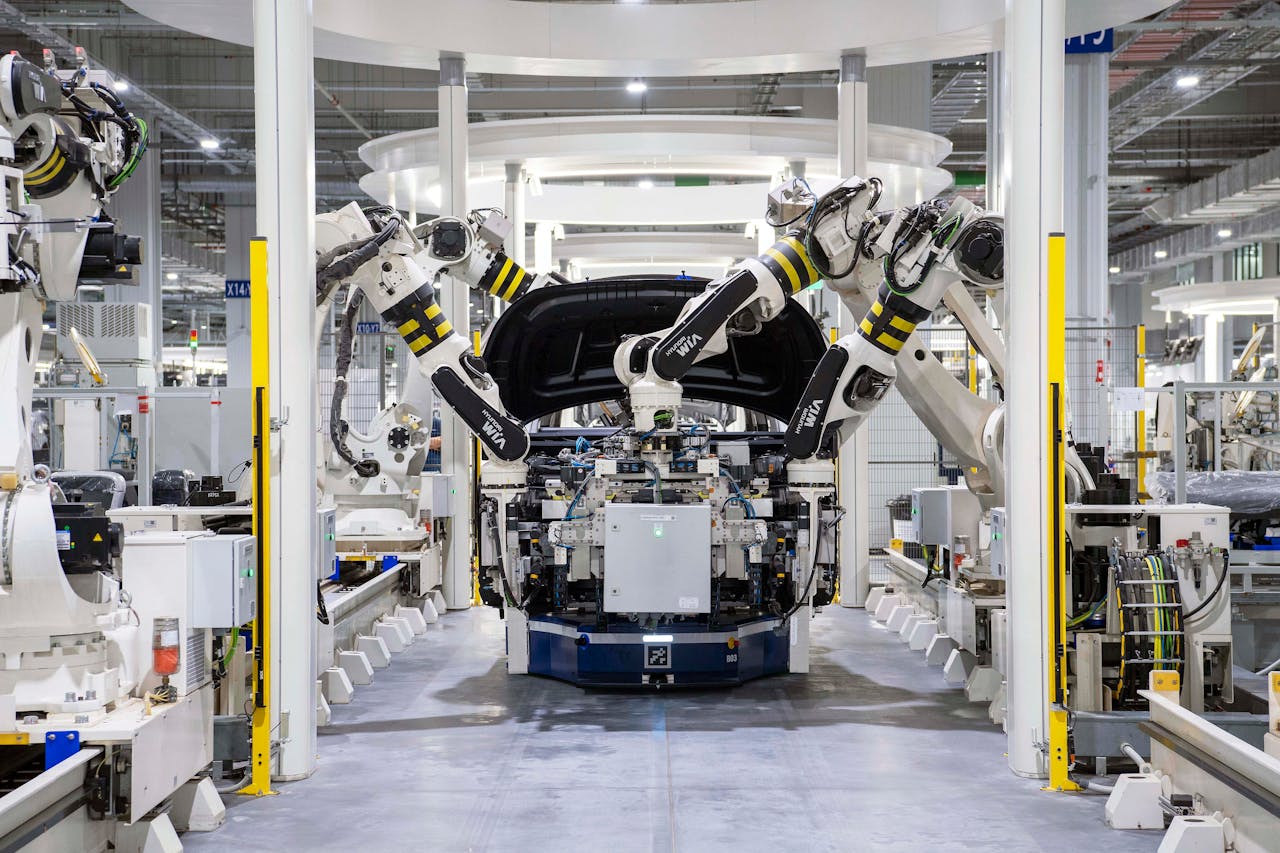It’s vital to understand that the automotive industry is facing unprecedented challenges as it moves towards 2025. As disruptions in sourcing and logistics continue to affect production timelines and costs, implementing effective supply chain resilience strategies will be vital for your business. By focusing on adaptability and innovation, you can enhance your competitiveness, ensuring that you remain responsive to market demands while mitigating risks associated with supply chain uncertainties.
Key Takeaways:
- Increased global uncertainties necessitate stronger supply chain strategies to mitigate risks and ensure continuity.
- Investment in technology and data analytics enhances visibility and responsiveness throughout the supply chain.
- Collaboration with suppliers and partners fosters agility and innovation in meeting evolving market demands.
The Foundation of Supply Chain Resilience
Establishing a resilient supply chain is necessary for the automotive market in 2025. It enables manufacturers to navigate disruptions effectively, ensuring the continuity of operations and customer satisfaction. Your strategy should include diversified sourcing, robust inventory management, and proactive risk assessment. Understanding The Future of Automotive Supply Chains: Challenges … will help you prepare for emerging threats and leverage opportunities.
Defining Supply Chain Resilience in the Automotive Sector
Supply chain resilience in the automotive sector refers to the capacity to anticipate, prepare for, and respond to disruptions while maintaining operational efficiency. This includes not only immediate responses to crises but also long-term strategies that enhance agility and sustainability within your supply chain. By aligning your operations with these principles, you can better withstand shocks, ensuring prompt delivery and consistent quality.
The Role of Flexibility and Adaptability in Automotive Supply Chains
Flexibility and adaptability play a pivotal role in the success of automotive supply chains. By incorporating modular designs and advanced technology, you can quickly pivot in response to market changes, such as fluctuating demand or supply shortages. Successful companies utilize real-time data analytics to adjust their procurement and production processes, allowing for rapid reconfiguration of supply routes and inventory management. This proactive approach not only enhances operational efficiency but also positions you favorably against competitors who may struggle with rigid systems.
Flexibility and adaptability not only enable you to respond to immediate market pressures but also facilitate long-term growth. For instance, automated systems can minimize lead times, while a diverse supplier network mitigates the risk of supply disruptions. Companies like Toyota and Ford have implemented flexible manufacturing systems that allow them to shift production rapidly based on consumer demands. Such strategies underscore that a resilient supply chain is an ongoing process rather than a one-time setup, ensuring your organization remains competitive in a volatile market.
Lessons from Recent Disruptions: A Reflective Analysis
Examining recent disruptions in the automotive industry highlights the need for robust supply chain resilience strategies. You can learn valuable insights from events such as the pandemic and natural disasters that have affected production. Comprehensive assessments, like the one in Building Resilient Automotive Supply Chains in 2025, provide frameworks for improvement.
COVID-19 and Its Impact on Automotive Supply Chains
The COVID-19 pandemic revealed vulnerabilities in global supply networks, severely disrupting manufacturing and logistics. Your awareness of these challenges can guide you in implementing systems that enhance flexibility and responsiveness in times of crisis.
Environmental Factors: Natural Disasters and Political Instability
Natural disasters and political instability can heavily disrupt supply chains in the automotive industry. These unpredictable events can delay production, lead to shortages, and inflate costs. By understanding the geographic and political factors affecting your supply chain, you can adapt and develop contingency plans.
- Develop geographic diversification strategies to mitigate local risks.
- Implement real-time monitoring systems for better visibility.
- Build partnerships with alternative suppliers for critical components.
- Ensure that your logistics network is adaptive and agile.
This will empower you to navigate future disruptions effectively.
Environmental disruptions are not isolated incidents; they have cascading effects on your supply chain stability. Consider how frequent hurricanes, wildfires, or geopolitical tensions alter market dynamics. Diversifying suppliers and increasing stock of critical parts can lessen these impacts significantly.
- Conduct risk assessments regularly to identify vulnerabilities.
- Create a crisis management team to respond swiftly to emergencies.
- Invest in technology that enhances predictive analytics for better decision-making.
- Foster strong relationships with local governments for smoother operations during crises.
This proactive approach equips you to face unpredictable environmental challenges head-on.
Strategic Innovations Driving Resilience
Innovative strategies are reshaping the landscape of automotive supply chains, ensuring they can withstand disruptions while optimizing efficiency. As the industry braces for 2025, adopting strategic innovations such as advanced technology integration, diversified sourcing, and collaborative partnerships becomes necessary for improving responsiveness to market fluctuations.
Embracing Technology: AI and Blockchain in Supply Chains
Leveraging AI and blockchain technology can transform your supply chain operations. AI enhances forecasting accuracy while streamlining logistical processes, allowing for real-time data analysis and improved decision-making. Meanwhile, blockchain ensures transparency and security in transactions, fostering trust among all stakeholders and decreasing the potential for disruptions.
Diversification of Supply Sources: A Proactive Approach
Diversifying your supply sources mitigates risks associated with dependencies on single suppliers. By establishing relationships with multiple suppliers across different regions, you can maintain operational continuity in the face of unexpected disruptions, such as natural disasters or geopolitical tensions.
For instance, companies adopting a proactive approach to diversification often engage with local suppliers in various geographical areas, reducing transportation costs and lead times. This strategy not only helps in managing risks effectively but also enhances suppliers’ competition, resulting in better pricing and innovation. A study revealed that businesses with diversified supply bases experienced 20% less disruption during crises compared to those reliant on singular sources, underscoring the advantages of this strategy in today’s volatile environment.

Future-Ready Practices: Preparing for 2025
Adopting future-ready practices is necessary for navigating the complexities of the automotive supply chain by 2025. Embracing advanced technologies, like AI and IoT, will enhance real-time decision-making and predictive analytics, streamlining operations and reducing costs. You can also leverage digital twins to simulate supply chain scenarios, enabling proactive responses to disruptions. By focusing on agility and flexibility, you position your organization to adapt and thrive in a rapidly evolving market.
Sustainability Initiatives as a Core Resilience Strategy
Integrating sustainability into your supply chain enhances resilience and meets growing consumer demand for eco-friendly practices. By adopting cleaner technologies and prioritizing circular economy principles, you can reduce waste and improve efficiency. Implementing sustainable sourcing and transparent reporting not only mitigates risks but also strengthens your brand reputation, appealing to environmentally conscious consumers and investors alike.
Collaboration and Partnerships: Building a Strong Network
Forming strategic collaborations and partnerships is vital for enhancing supply chain resilience. Engaging with suppliers, logistics firms, and technology providers enables you to share resources, risks, and information, fostering innovation. By creating an ecosystem of trusted partners, you can achieve greater transparency and responsiveness to disruptions while optimizing operational efficiencies.
Cultivating alliances with key stakeholders in your supply chain brings significant advantages. Joint ventures and information-sharing initiatives can lead to improved resource allocation and risk management. For instance, Toyota’s collaborative approach with its suppliers ensures robust supply chain continuity, allowing for rapid response to market fluctuations. By working together, you can not only weather storms but also identify new opportunities for growth and innovation, thus fortifying your competitive edge in the automotive market.

The Economic Implications of Enhanced Resilience
Enhanced resilience in the automotive supply chain directly translates into significant economic advantages. By effectively mitigating risks, you can reduce disruptions, lower operational costs, and improve overall efficiency. This proactive approach enables companies to maintain profitability even in turbulent markets, driving competitiveness. Research indicates that resilient supply chains can lead to a 20-30% increase in revenue by capitalizing on new market opportunities more swiftly than less agile competitors.
Long-term Cost Savings vs. Short-term Investments
Investing in resilient supply chain strategies may require substantial upfront costs, but the long-term cost savings often outweigh these initial financial commitments. By minimizing disruptions, you can avoid expensive delays and last-minute sourcing, leading to reduced overhead. For instance, companies adopting risk management programs have reported a 10-15% decrease in operational expenditure over five years.
Aligning Resilience Strategies with Market Demands
Adapting your resilience strategies to align with market demands fosters better responsiveness and customer satisfaction. As consumer preferences evolve, integrating flexible supply chain practices enables you to quickly adjust production and inventory to meet changing requirements. This alignment not only increases efficiency but also enhances brand loyalty.
Aligning resilience strategies with market demands requires continuous engagement with consumers and regular analysis of market trends. By employing techniques such as predictive analytics, you can foresee fluctuations in demand and adjust your supply strategies accordingly. For instance, companies leveraging data analytics to track consumer behavior have been able to reduce excess inventory by up to 25%, ensuring that supply matches demand while minimizing waste. Understanding these dynamics positions you to capitalize on emerging opportunities quickly, leading to increased market share.
Summing up
To wrap up, understanding and implementing automotive supply chain resilience strategies is imperative for you as you navigate the market landscape of 2025. These strategies empower you to mitigate risks and adapt to disruptions effectively, ensuring your operations remain competitive and sustainable. By focusing on the resilience of the component supply chain in 2025, you can enhance your ability to respond to challenges and capitalize on opportunities as they arise. Explore more on how to achieve this in detail here.



